Understanding Bathroom Sink Drain Catchers: Functions and Types
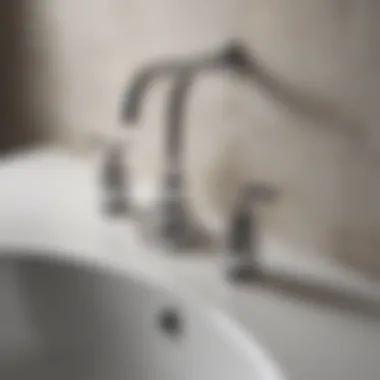
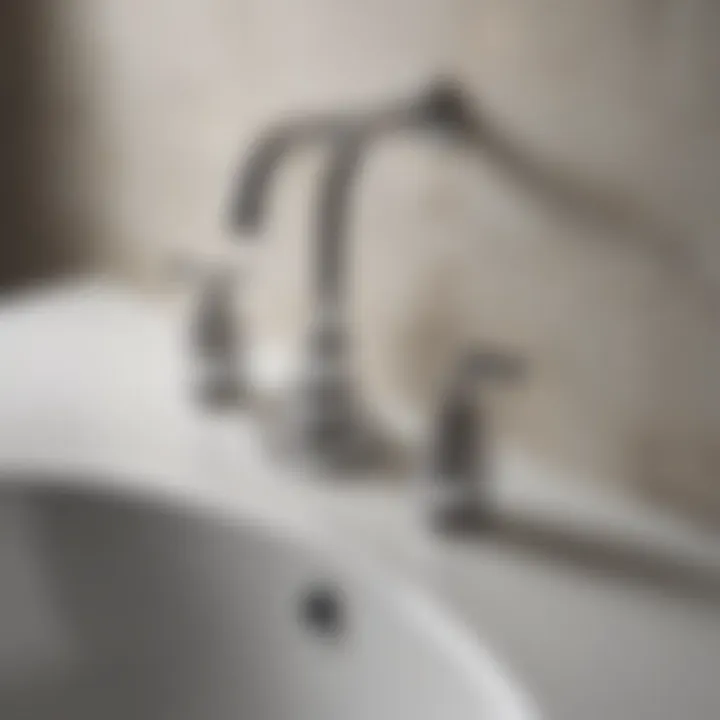
Intro
Bathroom sink drain catchers play an essential role in maintaining not just the functionality of your sink but also the overall health of your plumbing system. Many homeowners face challenges with clogged drains, often leading to time-consuming and costly repairs. This article dives into the various types of drain catchers, their functions, and how they can significantly improve your home maintenance routines. A thorough understanding of these products equips you with the knowledge to make informed decisions regarding their use and installation.
Understanding the significance of drain catchers is paramount, especially when considering the diverse materials and types available in the market. From simple mesh screens to sophisticated models designed for specific sinks, each type exhibits distinct advantages. Proper installation and regular maintenance enhance their effectiveness, ultimately leading to prolonged plumbing health and reduced repair costs.
Let’s begin by outlining the materials required for a do-it-yourself approach to selecting and installing drain catchers.
Prelude to Bathroom Sink Drain Catchers
Bathroom sink drain catchers are often overlooked but serve a significant purpose in maintaining cleanliness and hygiene in the home. This section aims to shed light on the importance of these devices, which contribute to a well-functioning plumbing system and improve overall sanitation. As homeowners strive to manage household tasks efficiently, understanding the role of drain catchers becomes crucial.
Definition and Purpose
A bathroom sink drain catcher is a device designed to trap debris and prevent it from entering the drainage system. It is typically placed over or within the sink's drain and works by allowing water to pass through while capturing hair, soap residue, and other unwanted particles. The primary purpose of these catchers is to prevent clogs, which can lead to more severe plumbing issues and costly repairs. In addition to blockage prevention, they also aid in keeping the bathroom environment clean, which is especially important for households with multiple family members.
Using a drain catcher can significantly reduce the frequency of plumbing problems, ultimately saving homeowners time and money.
Common Misconceptions
Many people underestimate the effectiveness of drain catchers, thinking they are unnecessary or too simple. One common misconception is that all sink drains function well without any additional protection. In truth, even minor clogging can escalate over time, leading to a complete blockage. Another belief is that drain catchers require excessive maintenance. On the contrary, they are relatively easy to clean and maintain, requiring only regular rinsing or occasional replacement. By addressing these and other myths, homeowners can make informed decisions about incorporating drain catchers into their bathroom sinks.
"Ignoring the use of drain catchers may seem harmless at first, but the impact on plumbing can be significant over time."
In summary, bathroom sink drain catchers play a vital role in maintaining the functionality of plumbing systems while promoting a clean environment. Understanding their definition, purpose, and debunking common misconceptions are essential steps towards a more organized home.
Types of Bathroom Sink Drain Catchers
Understanding the different types of bathroom sink drain catchers is crucial in selecting the appropriate solution for your home. Each type comes with unique characteristics, advantages, and disadvantages that suit varying needs and preferences. Here, we will delve into the key types, offering insights into their functionality and specific benefits.
Mesh Catchers
Mesh catchers are a popular option for many households. They are primarily made of fine wire mesh that traps hair and debris while allowing water to flow through freely. The lightweight nature of mesh catchers makes them easy to install and remove for cleaning. Because they can capture even the smallest particles, they are effective at preventing clogs.
A significant advantage of mesh catchers is their affordability. They are often inexpensive and readily available in many stores. However, one should consider that over time, the mesh might degrade or become stained, which can affect its effectiveness and hygiene. Regular cleaning helps maintain their function and appearance.
Silicone Drain Catchers
Silicone drain catchers offer a flexible and durable solution. Made from high-quality silicone, these catchers fit snugly in the sink and are often designed to conform to the drain's shape. This ensures they stay in place while effectively catching debris. Additionally, silicone is easy to clean and can withstand high temperatures, making it resistant to damage.
One notable benefit of silicone catchers is their aesthetic appeal. They often come in various colors and designs, enhancing the look of your sink area. However, their price point may be slightly higher than that of mesh products. Their longevity and ease of use often outweigh the initial investment.
Metal Drain Strainers
Metal drain strainers are another reliable type of drain catcher. Typically made from stainless steel, these strainers provide durability and strength. Their design prevents heavy clogs while allowing water to escape efficiently. They often have a sleek appearance, adding a touch of elegance to the bathroom.
Although they tend to be more expensive than plastic or mesh options, metal strainers are known for their longevity, lessening the need for frequent replacement. One thing to keep in mind is the potential for rust over time, especially in humid environments, so regular maintenance is essential.
Plastic Drain Clogs
Plastic drain clogs represent a more economical choice for those concerned about budget. They are lightweight and often feature various designs for specific applications. These catchers excel at blocking hair and debris, making them practical for daily use.
However, they may not offer the same level of durability as metal or silicone options. Over time, plastic can become brittle or discolored, which can compromise its function. It is advisable to inspect plastic catchers regularly to ensure they remain effective and to replace them as needed.
In summary, each type of bathroom sink drain catcher has distinct features that cater to different needs and preferences. Evaluating these options based on materials, cost, and maintenance can help you make an informed decision for your bathroom.
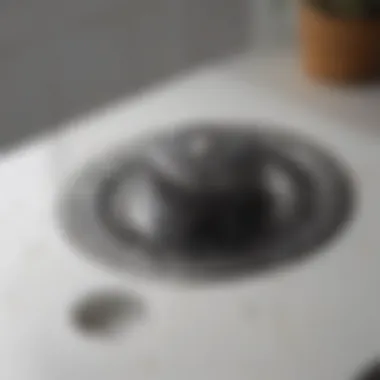
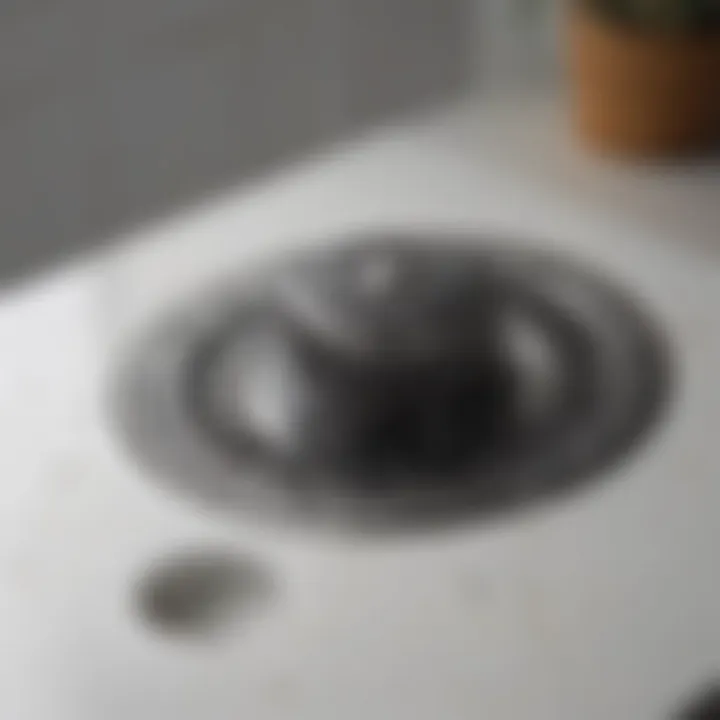
Key Benefits of Using Drain Catchers
Bathroom sink drain catchers offer crucial advantages that go beyond mere aesthetics. They serve as practical tools that can enhance the functionality of your sink, reduce plumbing issues, and promote better hygiene. Understanding these benefits can guide homeowners in making informed decisions about using drain catchers.
Preventing Clogs
One of the primary functions of drain catchers is to prevent clogs in sink systems. Without these devices, hair, soap residue, and other debris can easily accumulate within the drain, leading to significant blockages. A well-designed drain catcher traps the unwanted particles before they can enter the plumbing system. This preventative measure can save homeowners substantial costs associated with plumbing repairs and professional cleaning services.
Additionally, the regular use of drain catchers significantly reduces the frequency of clogs. Clogs can cause water to back up, leading to unpleasant odors and inconvenient situations. So, having a sturdy drain catcher minimizes these risks and allows for smoother water flow.
Facilitating Maintenance
Another clear benefit is the ease of maintenance that drain catchers provide. By trapping debris, they make cleaning the sink and the catchers themselves a straightforward task. Homeowners can simply remove the catcher, empty the collected debris, and rinse it clean. This simple step can be done regularly, keeping the sink cleaner and more hygienic.
For those who may not have much time to dedicate to cleaning, drain catchers provide a much simpler solution. They contribute to healthy sink maintenance without requiring hours of labor. Instead of waiting until a blockage occurs, regular maintenance with a drain catcher keeps everything running efficiently.
Enhancing Hygiene
The hygiene benefits associated with drain catchers cannot be overlooked. A clean sink is essential for a healthy home environment. Allowing hair and other waste to wash down the drain can lead to an unsightly buildup and potentially foster the growth of bacteria.
Drain catchers act as a barrier, collecting debris before it can contribute to dirty, unsanitary conditions. By routinely checking and cleaning the catcher, homeowners can ensure that their sink remains a clean area for daily use. Moreover, improved hygiene reflects positively on overall home cleanliness, which is particularly important for families and individuals who prioritize health.
"Proper maintenance and preventive measures can significantly prolong the life of your plumbing system while enhancing overall home hygiene."
In summary, installing and maintaining a drain catcher comes with benefits that extend to both plumbing systems and sanitary conditions. This investment in protection can lead to fewer plumbing issues, easier maintenance, and a cleaner, healthier home environment.
Materials Used in Drain Catchers
Choosing the right material for bathroom sink drain catchers is crucial. Different materials offer unique strengths and weaknesses, impacting both their functionality and longevity. Understanding these materials is important to ensure you select a drain catcher that aligns with your needs and preferences.
Stainless Steel
Stainless steel is a popular choice among homeowners for drain catchers. This material is corrosion-resistant, which means it can withstand constant exposure to water without deteriorating. Its durability ensures a long lifespan, reducing the need for frequent replacements.
Additionally, stainless steel offers a sleek appearance that fits well with contemporary bathroom designs. It is also easy to clean, making maintenance minimal. To maintain its shine, simply wipe it down with a cloth.
Some drawbacks do exist. If the surface is scratched, it may be more prone to staining, especially if food particles or soap scum accumulate. It's essential to ensure that cleaning procedures are followed regularly to prevent any buildup.
Plastic Variations
Plastic drain catchers are also widely used due to their affordability and lightweight nature. These are available in various sizes, colors, and designs, allowing homeowners to choose one that complements their decor. Plastic can be a practical option in bathrooms where aesthetics are less of a concern.
However, it’s important to note that plastic may not withstand heavy use compared to stainless steel. It can become brittle over time, especially with exposure to hot water or harsh cleaning chemicals.
Maintenance of plastic catchers typically involves rinsing them out and allowing them to air dry. If they warp or discolor, it may be time to consider a replacement.
Sustainability Considerations
The rise of eco-conscious consumers has led to a greater focus on sustainability when choosing materials for drain catchers. Although both stainless steel and plastic are common, many homeowners are now looking for options that offer environmental benefits.
For example, stainless steel is 100% recyclable, which means it can be repurposed when it reaches the end of its life. Alternatively, there is a growing market for biodegradable plastics that offer similar functionality without the long-term environmental impact. Using such materials can help reduce waste and promote a more sustainable lifestyle.
Choosing sustainable materials often aligns with broader environmental values. Homeowners can play a substantial role in reducing waste and protecting natural resources. Before purchasing, research the materials and practices of brands to make a well-informed decision.
Informed choices regarding materials can lead to enhancements in overall bathroom hygiene and environmental health.
Installation Guidelines for Drain Catchers
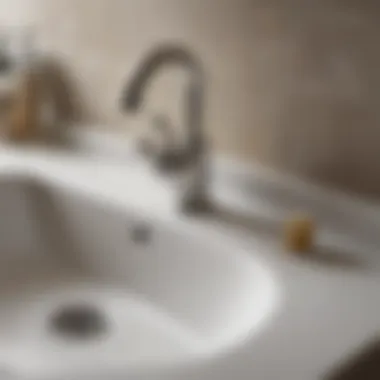
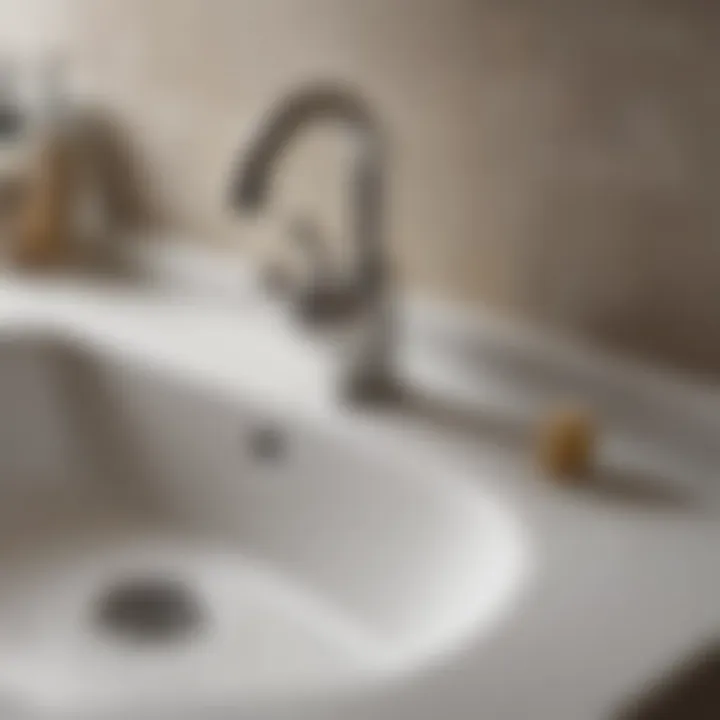
Installing drain catchers correctly is essential to maximize their effectiveness in preventing clogs and maintaining the integrity of your plumbing system. This section will focus on specific elements, benefits, and considerations related to the installation guidelines for bathroom sink drain catchers, ensuring that both housewives and homeowners can tackle this task with confidence.
Step-by-Step Installation
- Gather Your Tools: Begin by assembling the necessary tools. Generally, you will need a screwdriver, a wrench, and possibly pliers, depending on the type of drain catcher you have purchased.
- Turn Off Water Supply: To avoid any accidental spills, turn off the water supply to the sink. Locate the shut-off valves under the sink and turn them clockwise.
- Remove Existing Drain Cover: If your sink has a current drain cover, carefully unscrew or unclip it. Inspect the area to ensure that no debris or residual materials remain that could hinder the new installation.
- Check Compatibility: Ensure that your new drain catcher fits the drain perfectly. It should sit flush and not allow any gaps for debris to slip through. If the fit is not right, consider returning it for an appropriate size.
- Install the New Drain Catcher: Place the drain catcher into the drain opening. If it requires securing, use the screws or clips to fasten it in place. Ensure it is tightened appropriately but avoid over-tightening, which may cause damage.
- Test for Stability: Once the installation is finished, gently pull on the drain catcher to ensure it is securely positioned. It should not lift out easily.
- Turn On Water Supply: After confirming everything is installed correctly, turn the water supply back on, checking for any leaks.
- Routine Checks: Regularly check the installation for any signs of wear or loosening. Tighten as necessary to ensure long-term efficacy.
Common Mistakes to Avoid
When installing a drain catcher, awareness of common mistakes can save time and frustration. Here are some pitfalls to be aware of:
- Ignoring Size Constraints: Using a drain catcher that is not compatible with the sink size will lead to ineffective performance. Verify dimensions before purchasing.
- Skipping Cleaning: Failure to clean the drain area before installation can trap debris behind the new catcher, leading to clogs.
- Over-tightening Hardware: While ensuring a secure fit is necessary, over-tightening screws could strip them or cause breakage.
- Neglecting Regular Maintenance: Infrequent checks after installation can allow wear to escalate unnoticed, reducing the efficiency of your drain catcher.
- Installing Without Instructions: Always refer to manufacturer guidelines. Some drain catchers have specific installation requirements that must be followed for optimal performance.
Proper installation of drain catchers not only reduces plumbing issues but also promotes better hygiene in the bathroom.
In summary, following the correct installation guidelines enhances the performance of drain catchers. By getting it right the first time, you reduce the need for frequent adjustments or replacements, ultimately benefiting your home's plumbing system.
Maintenance Tips for Optimal Performance
Maintaining bathroom sink drain catchers ensures their effectiveness and longevity. Proper care can significantly enhance their performance, leading to fewer plumbing issues. Regular maintenance also promotes hygiene by preventing the buildup of grime and bacteria.
Regular Cleaning Procedures
A consistent cleaning schedule is essential for drain catchers. The frequency of cleaning may depend on usage, but once a week is a good baseline. Here are some effective steps to follow:
- Remove the Catcher: Start by gently pulling the drain catcher out of the sink. If it is a mesh type, be careful not to damage it.
- Rinse Under Water: Use warm water to rinse off any debris. This helps loosen any hair or particles stuck to the catcher.
- Use a Brush: For stubborn buildups, a soft toothbrush can be handy. Simply scrub the surface to remove any gunk that may have accumulated.
- Soak in Vinegar: Occasionally, soaking the catcher in vinegar for 15-20 minutes can help dissolve mineral deposits, especially in areas with hard water.
- Dry Thoroughly: Make sure to dry the catcher completely before placing it back. This prevents any potential mold growth.
By following these steps, homeowners can maintain the functionality of their drain catchers effectively and efficiently.
Signs of Wear and Tear
Regular inspection of drain catchers is crucial in identifying signs of wear and tear. Prompt recognition allows for timely replacements, avoiding bigger plumbing problems. Some indicators to look out for include:
- Cracks or Breaks: Any visible cracks are a clear sign that the catcher may not function effectively. Even small cracks can lead to leaks and blockages.
- Deformation: If the catcher does not sit well or appears misaligned, it may have lost its shape. This can result in inefficient drainage,
Impact of Drain Catchers on Plumbing Health
Drain catchers play a vital role in maintaining the plumbing integrity of a home. They are not just an accessory; they are fundamental in ensuring that the plumbing system functions efficiently. Understanding the impact of drain catchers on plumbing health is essential for homeowners seeking to avoid costly repairs and enhance the longevity of their systems.
Reduction of Drain Blockages
One of the main functions of drain catchers is to reduce drain blockages. Hair, soap scum, and food particles can easily accumulate in sink drains and lead to clogs. When this happens, the flow of water slows down or stops altogether. Drain catchers serve as the first line of defense against these materials. By capturing debris before it enters the plumbing system, they help maintain open and clear pathways for water.
Regularly cleaning and maintaining drain catchers ensures that they effectively perform their functions. It is recommended to check and clean them weekly to prevent any buildup that could lead to larger plumbing issues. Therefore, the use of drain catchers not only prevents immediate blockages but also considerably contributes to the overall health of the plumbing system.
Long-term System Benefits
In addition to reducing blockages, drain catchers offer long-term benefits for your plumbing system. When drains are kept clear, water flows freely, which minimizes pressure on pipes. Excessive pressure can cause wear and tear, leading to leaks and other significant plumbing damage.
Another benefit is the prevention of foul odors. When food particles and other debris are trapped in drains, they can decompose and produce unpleasant smells. Drain catchers keep these materials locked away, maintaining a fresh home environment.
Using quality drain catchers can also extend the lifespan of the plumbing. Fewer clogs mean fewer repairs and reduced likelihood of replacing pipes, which can be costly.
"Investing in a drain catcher is a proactive measure toward maintaining plumbing health. It saves both time and money in the long run."
Homeowners who recognize the importance of these tools are more likely to experience uninterrupted plumbing systems. Thus, considering aspects such as material and compatibility during your selection can amplify these benefits even further.
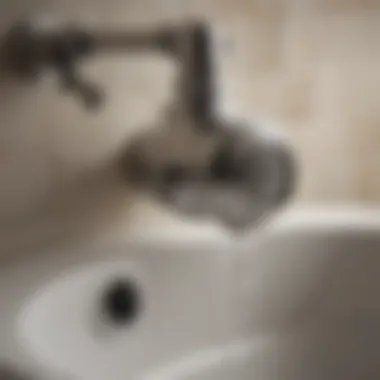
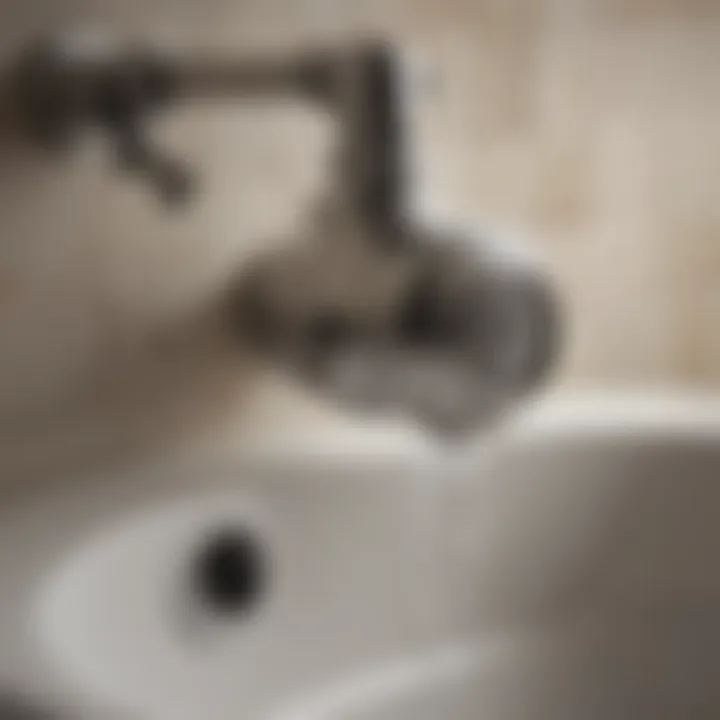
Considerations for Choosing the Right Drain Catcher
Choosing the right drain catcher is crucial for efficient home maintenance. Selecting an appropriate model can prevent significant plumbing issues later. The right drain catcher acts not only as a barrier to debris but also enhances the overall functionality of the sink. There are several important factors to consider, including size, aesthetic preferences, and budget constraints. Each of these elements plays an important role in ensuring that the drain catcher aligns with your needs and home environment.
Size and Compatibility
When it comes to selecting a drain catcher, size is paramount. The effectiveness of a drain catcher is directly influenced by its compatibility with your sink. An ill-fitting catcher may allow food particles or hair to pass through, contradicting its purpose.
- Measure your drain: Before purchasing, measure the diameter and depth of your sink's drainage opening. This ensures a snug fit.
- Adjustable options: Some manufacturers offer adjustable drain catchers, which can accommodate a range of sizes, making them versatile for different sinks.
If the size is overlooked, the drain catcher can become ineffective. Therefore, ensure that the model fits perfectly within the drain system.
Aesthetic Preferences
While functionality is critical, aesthetic considerations shouldn't be neglected. A drain catcher should complement your bathroom decor. A stylish design can elevate the visual appeal of your sink area and make maintenance tasks feel less cumbersome.
- Material choice: Different materials offer various appearances. For example, stainless steel combines durability with a sleek finish, while silicone offers a range of colors and patterns.
- Design options: Look for catchers that blend with your existing fixtures. Simple yet elegant designs can enhance the sink area.
Selecting a visually appealing drain catcher can enhance your bathroom's overall design, allowing functionality and beauty to coexist.
Budget Constraints
Budget is an essential factor in the selection process. The market offers a wide range of drain catchers at various price points. Understanding where to allocate resources can lead to better investment in home maintenance.
- Quality vs. cost: Opting for cheaper models can seem appealing but may result in more frequent replacements. Invest in quality catchers that last longer and perform better.
- Long-term savings: A well-chosen drain catcher can save money in terms of plumbing repairs and maintenance costs over time.
Balancing cost with quality is vital. It is better to spend a little more upfront on a reliable product than frequently replacing cheaper models.
Investing in the right drain catcher not only prevents drain blockages but also contributes to the longevity of your plumbing system.
Innovations in Drain Catcher Design
The importance of innovations in drain catcher design lies in the evolving needs of homeowners and the pursuit of improved functionality. As lifestyles change, so does the demand for more efficient and aesthetically pleasing products. New designs not only address practical issues like clog prevention but also enhance the overall look and feel of modern bathrooms. Consumers are increasingly aware of how functional items can blend seamlessly into their home design while tackling practical concerns.
Smart Drain Solutions
Smart drain solutions represent a significant leap forward in the functionality of bathroom sink drain catchers. These products often incorporate technology that can help homeowners optimize their plumbing systems. For example, some smart drain catchers feature sensors that can alert users when a blockage is imminent. This proactive approach means that potential issues can be resolved before they escalate into major clogs or plumbing mishaps. The importance of these innovations cannot be overstated; they empower homeowners to take control of their plumbing health in real time.
In addition to alert systems, some products integrate with smart home ecosystems. This connectivity allows users to monitor their plumbing functionality alongside other household systems from their smartphones. One specific product to consider is the Pura Drain Smart System, which tracks usage patterns and provides insights on maintenance schedules. By keeping users informed, these smart solutions can effectively reduce the frequency of emergency plumbing calls, thus saving both time and money.
Eco-Friendly Options
The emergence of eco-friendly options in drain catcher design is crucial to promoting sustainability in household maintenance. Many consumers today are looking for ways to minimize their environmental impact. Innovations in materials, such as biodegradable plastics and recycled metals, provide alternatives that do not compromise effectiveness.
Moreover, manufacturers are increasingly focusing on designs that not only filter debris but also minimize water usage. Some advanced drain catchers now incorporate features that guide water flow more efficiently through the plumbing system. This efficiency ensures that not only do the drain catchers prevent clogs, but they also contribute to water conservation.
For those interested in green plumbing solutions, products such as EcoStrainer made from plant-based materials are worthy of consideration. They provide effective drainage without contributing additional waste to landfills.
"Choosing eco-friendly products like innovative drain catchers is a small yet significant step toward reducing environmental footprints."
In summary, the innovations in drain catcher design reflect a growing understanding of the importance of both functionality and sustainability. Smart drain solutions provide real-time control over plumbing health, while eco-friendly options cater to the environmentally conscious consumer. Together, they enhance the versatility and effectiveness of bathroom sink drain catchers, ultimately enriching the homeowner's experience.
Culmination
The conclusion ties together the various elements discussed in the article regarding bathroom sink drain catchers. This section emphasizes the significance of these devices in maintaining plumbing efficiency and protecting against potential clogs.
Recap of Key Points
- Understanding Functions: Drain catchers play a critical role in filtering debris, hair, and particulates that could lead to blockages. Their main function is to prevent these materials from entering the plumbing system.
- Types and Materials: The variety of materials, such as stainless steel, silicone, and plastic, offers options based on personal preference and environmental considerations. Each type has its unique advantages, which can influence functionality and longevity.
- Benefits: Regular use enhances hygiene in the bathroom, minimizes maintenance efforts, and promotes overall plumbing health. A well-maintained drain catcher can save homeowners from costly repairs and service disruptions.
- Installation and Maintenance: Proper installation is essential for optimal performance. Simple regular cleaning ensures that the catchers remain effective, thus prolonging their operational life.
- Choosing the Right Option: Understanding size, aesthetic appeal, and budget is vital when selecting a drain catcher. The right choice can enhance both functionality and the visual aspect of the sink area.
Final Thoughts
Reliable insight into these systems offers homeowners greater assurance in the durability and cleanliness of their plumbing. Taking the time to explore options may ultimately lead to smarter solutions for ongoing home care.







